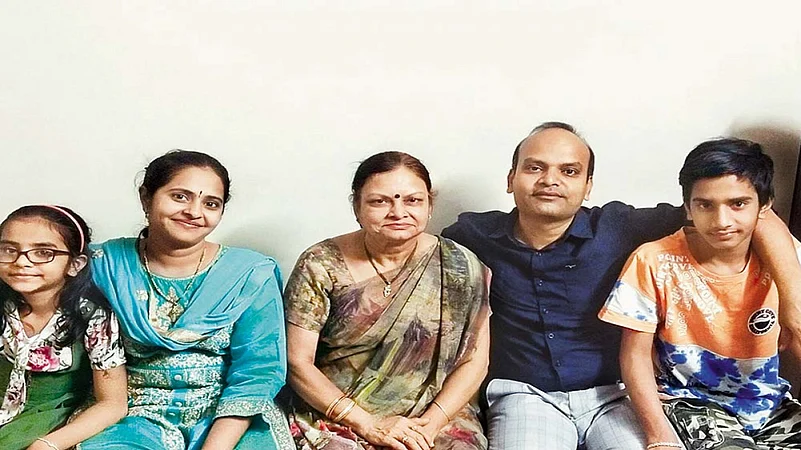Smitesh Satish Shah, 41, was a businessman, who dealt in building materials—steel, cement etc. After the long lockdown from mid-March, his work came to a standstill. As construction activity in Sangli halted, Shah had to shut shop. However, being a die-hard Gujarati, he did not give up. He experimented with stocks, though he had limited exposures to them. Luckily, he moved in at the right time. The markets were down, largely due to sustained selling pressure from foreign investors in February-March. This implied that most of the blue-chips were available at throwaway prices. In the initial days, Smitesh decided to become a day trader i.e., an individual who buys and sells on a daily basis.
He roped in his wife, Sneha, 39, father Satish Ramanlal, 65, and mother Rekha Satish, 60. Thus, the entire family moved lock, stock, and barrel into equities. What’s more, Smitesh gave Rs 10,000 to his 10-year-old son to play the stocks, though he kept a close vigil. “He invested wisely,” says the proud father. The family’s combined experiences, however, were mixed. According to Smitesh, in the earlier days of the lockdown cycle, he earned around Rs 2.5-3 lakh a month. But when he increased the exposures, he suddenly suffered a loss of Rs 1.5 lakh. The important thing was that he learnt a few lessons from this setback. He realised that day-trading was a tricky business, and moved away from it. A friend suggested that he should approach an experienced investment advisor to learn different tactics and strategies. Smitesh agreed, and became a disciplined investor, who indulged in delivery-based trading. “The market always pays if you enter it with a long-term horizon, which can be from three to seven years,” he explains.
ALSO READ
















